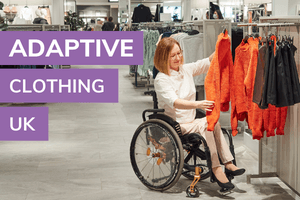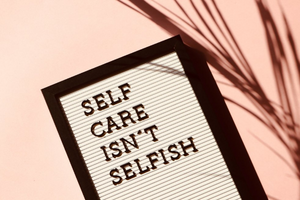Looking for an adventure holiday in the highlands?

Loch Insh Outdoor Centre is a family run centre nestled in 14 acres of stunning native woodlands on the shores of Loch Insh in the heart of the Cairngorms National Park, whether you come for just a coffee or a meal in the beautiful Boathouse Restaurant overlooking the loch or fancy taking part in some activities, we have something to offer all types of group, traveller and adventure seeker from water sports and dry land activities in summer to skiing skating and snowboarding in winter. Glen Feshie offers miles of mountain bike and walking trails for all abilities, and Farrletter crag is popular with keen climbers who come from miles around, just at the end of the loch. with all this on our doorstep its no wonder our cosy B&B and chalet accommodation is so popular with adventure holiday goers as well as folks just wanting to stop, switch off and reset for a couple of days. The centre is open daily and anyone can walk in and hire to go out on the loch. For those looking to learn to sail we are an RYA Recognised centre offering courses in sailing, windsurfing, wing foiling and kite surfing as well as Spey descent river trips in open canoes or on paddle boards. Paddling the river from Loch Insh down to the sea, a fantastic trip will take you from being an absolute novice to feeling quite confident by the end of the 5 days, lots more answers can be found on the website or if your interested but not sure what to do please pick up the phone and let us design an experience for your family or friends that will stay with you for a lifetime. For more information contact office@lochinsh.co.ukLoch InshKincraigKingussieInverness-shirePH21 1NU01540651272
Incontinence experts Ontex launches NEW men’s pants range

Incontinence experts Ontex have launched their new iD for Men Level 4 pants. Providing extreme comfort and a perfect fit, the all-round stretch, elastified material has a thin and flexible core to ensure that the pants fit like real underwear, perfect for carrying on with day to day activities. The pant has been designed to stay in place, not lose its shape or become bulky even when saturated. Thanks to the cotton-like material used on both the inside and out, it feels soft, all day long, so you won’t know you’re wearing an incontinence pant. This fully breathable material means a healthy skin and no sweating. Ontex exclusively specialises in products for continence management, including products for light, moderate and heavy incontinence in a range of unisex, female, male and junior styles. The products offer odour control and fast absorption, keeping liquid locked in the pad as well as anti-leakage protection. iD Men Level 4 come in a size Medium and Large and are available from id-direct.com, ASDA pharmacy and local pharmacies priced at £8.99
Warning Signs Your Child May Be Struggling With Their Mental Health

By Hammersmith, Fulham, Ealing, and Hounslow Mind It can be difficult to know whether a young person is going through the normal trials and tribulations of growing up or if they’re struggling with more serious mental health issues. A mental health issue can be temporary or long-term. It is characterised by changes in a person’s thinking, feeling, or behaviour which can cause distress or impact their daily life by reducing their ability to cope or function. Common mental health issues are acute stress, anxiety, or depression, which are on the rise in young people, especially in the wake of the COVID-19 pandemic. According to the Children’s Society, 1 in 6 children aged 5-16 are likely to have be experiencing a mental health issue, and in the last five years, the likelihood of a young person experiencing a mental health issue has increased by 50%. Every child will experience stress, anxiety, or sadness at some point in their life, but they can also be signs of deeper issues if they are especially intense, or persist for a long period of time. Mental Health Warning Signs in Children Becoming withdrawn If your child is acting quieter than usual, or spending more time alone, it might be a sign they’re experiencing low mood. While children may go through quiet phases, or just be introverted in general, going long periods without speaking to anyone may be an indicator of a mental health issue. Angry outbursts or extreme behaviour If your child is misbehaving at home or at school, it might be because of a build-up of stress. They may be exhibiting erratic or unpredictable moods, similar to mood swings. This may just be an adjustment period, or it could be a sign of something deeper. If their schoolwork or home life is drastically impacted As mentioned, normal parts of childhood and adolescence like stress or anxiety don’t necessarily indicate poor mental health. But if your child’s quality of life is noticeably deteriorating, if they’re missing school, not sleeping, or arguing all the time, it might be time to explore additional support. What To Do If You’re Worried About Your Child’s Mental Health If you’re worried about your child’s mental health, there are ways you can help. Try to have a conversation about mental health All the points I mentioned above can be normal parts of a child growing up and testing the boundaries of how they can behave. The easiest way to find out if they’re more serious signs of a mental health issue is to talk to your child about what they’re experiencing. The key here is to open a dialogue. Don’t demand answers or judge your child for what they say. Ask how they are doing, and if anything is troubling or scaring them. Listen, empathise with them, let them know you’re there to help, and ask how they’d like to move forward. Speak to your GP, or a mental health professional If your child tells you they’re dealing with a mental health issue, or they’re struggling to cope, speak to your GP. They may in turn recommend a mental health professional. A diagnosis of a condition might make things easier to understand, or you could be referred to a specialist or support group. It’s important to remember that mental health issues are common and treatable. The earlier a diagnosis is made, the sooner the right support can be found. We have mental health support resources for children, parents, carers, and education staff on our website. We also have more tips for helping young people with their mental health on our blog.
SECOND GROUND-BREAKING ANTIVIRAL TO BE DEPLOYED TO COUNTRY’S MOST VULNERABLE

Thousands of the country’s most vulnerable will be able to access the UK’s second ground-breaking antiviral – Pfizer’s PF-07321332+ritonavir (Paxlovid®) – from Thursday 10 February, the government has announced today. Those at highest risk who test positive for the virus – for example, people who are immunocompromised, cancer patients or those with Down’s Syndrome – could access PF-07321332+ritonavir directly. The antiviral molnupiravir and monoclonal antibody sotrovimab are already being deployed to the highest risk patients with nearly 10,000 patients being treated to date. PF-07321332+ritonavir reduced the relative risk of COVID-19-associated hospitalisation or death by 88% in those who received treatment within five days of symptoms appearing – meaning it could potentially save thousands of lives and help to ease burdens on the NHS. This is a significant development for those with compromised immune systems, for whom the vaccine can be less effective. The government, through the Antivirals Taskforce, has procured 4.98 million courses of antivirals – 2.75 million courses of PF-07321332+ritonavir and 2.23 million courses of molnupiravir – more per head than any other country in Europe. The PANORAMIC study is currently open and deploying the antiviral molnupiravir to patients. Anyone over the age of 50 or between 18 to 49 with certain underlying health conditions can sign up to the study as soon as they receive a positive PCR or lateral flow test result. They need to be experiencing COVID-19 symptoms that began in the last five days to be eligible to enrol. Further details on wider deployment – including potentially through the PANORAMIC study run by the University of Oxford and supported by the National Institute for Health Research (NIHR) – will be set out in due course. Health and Social Care Secretary Sajid Javid said: “Our pharmaceutical defences are crucial as we learn to live with COVID-19 and the UK is leading the way, especially when it comes to the use of cutting-edge antivirals. “This is an important milestone – especially as Paxlovid® has been shown in clinical trials to reduce the risk of hospitalisation or death for vulnerable patients by 88%, meaning potentially thousands of lives could be saved. “We will set out further details on access to the new antiviral soon – until then, anyone who is eligible who tests positive for COVID-19 and has symptoms should sign-up to the PANORAMIC trial for the chance to receive our other antiviral, molnupiravir.” Those in the highest risk group have been informed by the NHS if they have a condition that will make them eligible to receive these treatments, should they test positive for COVID-19. The eligible cohorts have been determined by an independent expert group commissioned by the Department of Health and Social Care and included in a clinical policy agreed by all four Chief Medical Officers in the UK. The UK Heath Security Agency (UKHSA) has sent priority PCR tests to around 1.3 million people thus far to support rapid turnaround of results so they can access the treatments as soon as possible after symptoms begin. Eligible patients who receive a positive test will be assessed over the phone by an expert clinician from an NHS COVID Medicines Delivery Unit (CMDU), who will review and discuss with the patient what the most appropriate treatment would be for them. Those being prescribed a monoclonal antibody treatment will be invited to attend the CMDU, while those receiving PF-07321332+ritonavir can either get someone to collect it for them or have it delivered to their home. The NHS has been setting up CMDUs since the summer. NHS National Medical Director Professor Stephen Powis said: “It is fantastic news that this new treatment, the latest cutting-edge drug that the NHS is rolling out through new COVID-19 medicine delivery units, will now be available to help those at highest risk of COVID-19. “Trials have shown it can reduce hospitalisation and risk of death by 88%, meaning we’ll be in the best position to save thousands of lives. “While it will still be up to clinicians to decide on a case-by-case basis whether this treatment, or indeed other COVID-19 medicines, is the best choice for their patients, it is an important step in our fight back against COVID-19.” Chair of the Antivirals Taskforce Eddie Gray said: “The UK has secured millions of doses of antivirals for NHS patients, so we can keep the most vulnerable safe from the virus. “This is a promising development in deployment of these treatments. The Taskforce will continue our work to identify the world’s best antiviral treatments for UK patients.” Remdesivir will also be rolled out through this route – a broad-spectrum antiviral administered through a drip. PF-07321332+ritonavir was approved by the Medicines and Healthcare Products Regulatory Agency (MHRA) in December 2021.
Ten year vision to improve social care

People who need care, the social care workforce and unpaid carers will benefit from the ten-year vision for adult social care published today (Wednesday 1 December). The white paper is part of the government’s wider social care plans, backed by £5.4 billion, which for the first time provides a limit to the cost of care for everyone in the adult social care system, and significantly increases state support. The transformed social care system will apply to people in both residential and at home care and will set daily living costs at a lower rate than originally proposed, helping people save more money. It will mean nobody is forced to sell their homes in their lifetime. As part of the white paper, the government is today setting out further details on how over £1 billion for system reform will be spent over the next three years to improve the lives of those who receive care – as well as their families and carers. This will include providing greater choice, control and support to help people lead independent life by including funding to transform homes and improve the physical, digital and technological infrastructure. The funding will help pay for: The range and amount of new supported housing to be increased through £300 million in housing investment, to help local authorities offer greater choice, care and support, alongside a new practical service to make repairs and changes in peoples’ homes to help them remain safe and either stay with their families or live independently in accordance with their wishes. New technology and digitisation backed by at least £150 million to improve care quality and safety, support independent living and allow staff to provide focused care where it is needed. For example acoustic sensors which monitor movement will help residents sleep uninterrupted and allow carers to monitor them safely and be alerted if needed. Digital care records will be updated to make sure all caregivers have the latest up-to-date details to provide the best support possible. The 1.5 million strong adult social care workforce will see a record £500 million invested so they have the opportunity to progress in their careers with training and qualifications while providing an even better standard of care. This will help recognise their valued skills and prioritise their wellbeing with greater support for their mental health. Health and Social Care Secretary Sajid Javid said: “The pandemic has been an important turning point for social care, putting into the spotlight the incredible work the sector delivers day in and day out and highlighting the urgent need for change. “This ten-year vision clearly lays out how we will make the system fairer and better to serve everyone, from the millions of people receiving care to those who are providing it. “We are investing in our country’s future – boosting support to help people live at home with their families for longer and ensuring that health and care work hand in hand so people get the help they need.” The improvements will be funded through the 1.25 per cent Health and Social Care levy. Minister for Care Gillian Keegan said: “The lives of millions of people will be improved by our plans for social care supported by significant investment for system reform to deliver the person centred care we need. “We promised to come forward with proposals to improve social care and that is exactly what we are doing. “Our fantastic care staff, people who receive care and their families deserve a care system which works for them and these plans are the next step in helping make it a reality.” The reform programme also includes: £70 million to assist local authorities and improve the delivery and standard of care.An increase to the upper limit of the Disabled Facilities Grant for home adaptations such as stairlifts, wetrooms and home technologies to allow people to live where they want to and increase the options for care.Up to £25 million to work with the sector to kickstart a change in the services provided to support unpaid carers, to boost support and increase access to respite services giving them much needed support and a break.A new national website to provide easily accessible information for the public on social care and at least £5 million to pilot new ways to help people understand and access the care and support available. Minister for Rough Sleeping and Housing, Eddie Hughes MP said: “I’ve seen first-hand the benefits supported housing brings to those who need it and I’m thrilled this investment will mean even more people will have improved care and support. “The Disabled Facilities Grant is a lifeline for thousands of people, meaning they can live at home safely and independently. “This is just one of the ways this government is supporting the most vulnerable in our society, making sure they have a safe place to call home.” More details will be set out in due course as work continues to develop the plans set out in the white paper, with the support of all involved in the sector. Over the course of the three years further amounts from the £5.4billion will be distributed as the programme progresses. No significant reform can be achieved by central government alone which is why this paper is the culmination of working with hundreds of organisations and individuals across social care to develop this vision for reform. The department will continue working with a diverse group of stakeholders, including people who receive care and support as well as their carers as the vision develops.
The best adaptive clothing brands the UK has to offer in 2022

The UK is slowly catching up with the US and its options for adaptive clothing. We now have a selection of fantastic brands to choose from on the high street and online. However, there is limited awareness, and some people don’t know what is available to them. With over 15% of the global population experiencing some form of disability, we must do more to raise awareness so that everyone has access to adaptive clothing. But what is adaptive clothing? Adaptive clothing is designed specifically for people with physical disabilities. Men, women and children included as well as the elderly or people who are recovering from surgery. Designed to help the wearer dress with ease or can be dressed by their carer. Switching buttons for poppers, velcro or magnetic fastenings, reducing leg length for amputees. Choosing fabrics for comfort and hygiene whilst still looking classy and making the wearer feel good. Adaptive apparel has come such a long way on the high street to how it was a few years ago. Some big fashion brands now have an adaptive clothing section on their websites, but there are also some great up and coming small brands that everyone should know. That’s why here at Ucan2 magazine, we have gone on a hunt to track them down so that you have all your options in one place. Where to buy adaptive clothing in the UK 1. Optivus UK 2. Bealies Adaptive Wear 3. Unhidden 4. Able2Wear 5. Tommy Hilfiger 6. Bombini Tribe 7. Elba London 1. Optivus UK Optivus is a streetwear-inspired brand offering adapted clothing for men, women and children. Conceived by a mother wanting to give her son trendy fashion choices whilst reducing the stress of dressing and discomfort that standard clothing caused. Their goal is to “make their users valued, empowering self-esteem and self-acceptance by rendering a treasured experience.” You can see their range over on Instagram. 2. Bealies Adaptive Wear Bealies Adaptive Wear is the place to go for your adaptive joggers for wheelchair users. The brainchild of Caron Mcluckie whose son suffered a spinal cord stroke in 2016, who couldn’t find joggers with fly zip openings to easily self catheterise. From this Bealies was born, where she now joggers look great but gives the wearers dignity and self-confidence. Read the full story of how Bealie’s was found here. Go check out their Instagram. 3. Unhidden Unhidden throws out the pyjama’s with their adaptive clothing for men, women and fantastic homewares, instilling confidence and pride in the disabled community. Founded by Victoria Jenkins after a chance encounter with a woman in the hospital who struggled to remove her clothing when the doctors came round, restricted to wearing pyjama’s and loungewear but wanted to wear nice clothes. Unhidden, was created to give dignity and confidence back to the people who ‘normal’ clothing didn’t work for. Find them on Instagram. 4. Able2Wear Able2Wear has been developing adaptive clothing for over 25 years and is the longest established supplier of wheelchair clothing. They work closely with wheelchair users, carers and professionals to bring you their unique collection of garments. Designed to bring confidence, style and comfort to the wearer. Pop over to their Instagram. 5. Tommy Hilfiger Tommy Hilfiger is one of the world’s leading designer lifestyle brands. But not as widely known for its adaptive clothing, which first began in 2016 for children and then extended the year after to include adults. Its website now has a ‘shop by solution’ section where you can explore adaptive modifications. Follow them over on Instagram. 6. Bombini Tribe Bombini Tribe currently offers adaptive clothing for men, but adaptive clothing for women is coming soon, along with adaptive clothing for kids. The owner Gary Scholes started for his rugby team and close friends and now delivers all over the UK. Follow them on Instagram. 7. Elba London Forget the fiddly bra fastenings with Elba London, bringing you stylish lingerie that offers front magnetic fastenings to enable people with dexterity or mobility limitations. Elba is ‘able’ backwards and, Elba London wants everyone to be able to access lingerie that is not just accessible but also comfortable and looks good. Pop over to their Instagram. There you have it, some of the most fabulous adaptive clothing brands for disabled people from around the UK. You must agree there is plenty of choices out there.
The January Challenge – Join some of the creative world’s biggest talents

This is a unique opportunity to join in with some of the creative world’s biggest talents. The January Challenge from arts organisation 64 Million Artists, now in its eighth year, is 31 days of fun, quick and free creative challenges for everyone to enjoy. Previous challenges have included creating a self-portrait from household items, collaging a view from your window and writing poems inspired by a single word. And today, people from across the UK are being asked to submit their ideas for unique, creative challenges for the public to participate in throughout January 2022. In 2021, more than 50,000 people took part, including adults, children, workplaces, community groups and schools. Challenges were set by a huge variety of people, from six-year-olds to 86-year-olds across the country – as well as author and broadcaster Lemn Sissay, journalist Yomi Adegoke, theatre-maker and comedian Jess Thom, poet Inua Ellams and more. This year, 64 Million Artists will also have challenges designed by a range of creative collaborators, including chef Zoe Adjonyoh, signsong rapper SignKid, writer and performer Travis Alabanza, Derek Owusu, also a writer, and music collective Steam Down. Jo Hunter, founder of 64 Million Artists said: “The January Challenge is so exciting because it’s built by the people taking part. “All of the challenges come from people and organisations around the UK, sometimes even around the world! People don’t just ‘do’ the challenges; they dream them up too. “This year, the challenge is full of brilliant ideas designed by musicians, chefs, sports stars, writers, makers, activists – and you! Get involved.” The January Challenge 2022 will feature three new programmes for the public to choose from: “Challenges should be accessible to everybody taking part,” advises Jo. “We have more than 50,000 people participating, so think about time space, money and mobility. Challenges should take around 5-10 minutes to complete and, if people need materials, then they should be readily available in most homes.” People joining in this coming January will receive an email each morning with a new creative prompt to try out during the day. Challenge responses can then be shared with the supportive online community using the hashtag #TheJanuaryChallenge. As well as the general public, challenge ideas will come from creative people around the country, with new names being announced over the coming weeks. Even Rotherham United Football Club is signed up to set a challenge! The January Challenge by 64 Million Artists runs from 1 – 31 January 2022, and more information can be found at: https://bit.ly/DesignAChallenge
7 tips to reduce anxiety and improve your wellbeing

2021 has been a tough year for all, with lockdowns, job losses and lots of uncertainty around our way of living. At one point or another, you may have had to deal with a level of stress or anxiety. It impacts your mental health and wellbeing and can affect your everyday life, here are 7 tips to reduce anxiety and improve wellbeing. It does not matter whether you have persistent anxiety or only occasional anxiety. Having a set of techniques up your sleeve to help you combat the symptoms will improve overall wellbeing. Before sharing the simple tips to calm anxiety, we will look over the common ways anxiety manifests. Sometimes the signs are missed or not recognised, with people having physical, psychological symptoms or both. Anxiety symptoms to be aware of The list is quite extensive and not inclusive. You may only have one anxiety symptom, or you may have multiple if you are unsure whether you are experiencing anxiety, contact your GP for medical advice. If you are aware of the condition and are looking to tame anxiety, we have spoken with some leading experts to put together these top 7 tips for helping to combat .anxiety 7 tips to reduce anxiety 1. Have a laugh! Life can get all too serious. Did you know that laughing has numerous health benefits? When you start to laugh, not only do you take in a huge gulp of oxygen, the joke distracts you from your worries, and instantly lifts your mood. Laughter is known to lower levels of the stress hormone cortisol, as well as raising levels of those feel-good hormones, endorphins. When you share a laugh with a friend or work colleague, this strengthens bonds and helps make human connections. Make sure you schedule some laughing time into every day. This could be listening to a funny podcast, watching your favourite comedian, or perhaps spending time with pets. There are plenty of funny YouTube videos. Have you heard of laughter -yoga? – a special type of yoga designed to make you laugh! Whatever you do, find your funny side and have a good laugh every day! It will work wonders for getting rid of those miserable, anxiety feelings. by Dr Deborah Lee, Dr Fox Online Pharmacy 2. Ensure that you are getting enough sleep, nutrition and hydration for your meals. For your mind to function optimally, it is essential that you try and achieve this balance. Make sure you take adequate rest breaks during the day and try to keep within reasonable working hours. Priory – consultant psychiatrist Dr Natasha Bijlan 3. Recognising your triggers My top tip for reducing anxiety is recognising your triggers. Some people’s anxiety is triggered by a lack of control, other people get anxious when they’re overworked, and certain people can even feel anxious because everything seems to be going too well. Your triggers will not be the same as everyone else’s, so it’s important to get to know yourself and find out what makes you more anxious than usual. With this information, you can either avoid these triggers (if they are unhealthy) or learn how to cope with them (if they are healthy or necessary for you to have. For example, one of my clients struggles with severe anxiety that is triggered by feeling lost. As a result, she feels triggered when she is in a new place or when she feels out of place in a social situation. It goes without saying that she can’t avoid being in unusual social situations, so I am working with her to build her confidence and to learn how to handle herself in a room by focusing on one person at a time. However, there are certain situations that I would advise her to avoid as the risk of her being traumatised wouldn’t be worth it. For example, if she suggested moving abroad on her own, I would ask her to seriously consider it. As you can see, there is a time for facing up to your triggers and a time for sitting back when they aren’t going to serve you. Ray Sadoun – www.okrehab.org/team 4. Purchase a house plant You might think of rosemary as an outdoor herb that exists purely to add flavour to your food. But when you keep rosemary indoors, it can help lower levels of the stress hormone cortisol in your blood. In fact,research confirms that the aroma of rosemary can improve cognitive function, which may help reduce anxiety symptoms. From Delamere Health in the North West. 5. Limit social media Social media causes you to focus on others more than yourself. Constantly being reminded of others’ accomplishments, luxuries and generally perfect life can have an impact on your stress levels, causing sleepless nights. Social media presents a distorted version of reality and what you actually see is probably far from the truth. Try and focus on yourself and your real relationships, making time for people that matter to you. Spending time with real friends make you feel happier, less stressed and allow you to sleep well. Comments by Abbas Kanani, pharmacist at Chemist Click 6. Stay flexible Whilst we have many reasons to be optimistic, the future is still uncertain. Accept that change is inevitable and be open-minded. If things don’t go to plan straight away, take a deep breath and try to keep your options open. By Dr Lynda Shaw, neuroscientist, business psychologist and change specialist. 7. Reading memoirs/autobiographies One of the things that helped me the most is reading memoirs/autobiographies, of people who have suffered from mental health problems too. This makes me feel a lot less alone and makes me realise that what I’m feeling is normal. They use their talent for words to describe the feelings of anxiety so accurately, which makes it relatable. George Fryer. One thing to remember when you are suffering from anxiety is that you are not alone! Most of us will suffer from anxiety at some point in our lives.
How To Effectively Communicate With People Who Have Some Form Of Hearing Loss

Hearing loss is considered a disability and approximately 11 million people in the UK have some form of it. Contrary to popular belief, hearing loss isn’t restricted just to an older population. Of this huge number, about three million are under 60 years of age. With these numbers taken into account, hearing loss is probably one of the most underrated and underreported issues in society today. There’s a good chance you know or will communicate with someone on a daily basis who is hard of hearing — so it’s very important to know how to talk to them in a considerate and understanding way. How hearing loss makes communication difficult Pretty much every conversation we have requires focus, energy and patience. So it naturally requires a lot more work to talk to others when it is hard to hear what is being said in the first place. And it only gets more difficult if the conversation is held in a noisy environment or is complicated by other factors such as a person muttering, talking too fast or quietly. In extreme cases, this might make a person withdraw from conversations or become more socially introverted. Which can lead to mental health problems down the line. Practical tips — talking to people with hearing loss If you’re planning on talking to someone who may be hard of hearing, try to find a suitable spot where there isn’t much background noise. Even a place with soft furnishings, such as mats and sofas can reduce the amount of echo/reverberation in an area. And if possible, if you are planning on many conversations, try to rearrange the furniture to make a more accessible space for those with hearing loss. Try to think positively, be understanding and — most important of all — try to be patient. It would mean a great deal to someone with hearing loss that you are willing to converse with them without showing signs of impatience. Also, be aware that someone with impaired hearing may study your lips closely as you are speaking, to try to better comprehend the words leaving your mouth. Tips to help you hear better if you have hearing loss The first (and perhaps most obvious) tip is to ask people to get your attention first, before starting a conversation. Then try to stand close to the person you’re speaking to. Or if you’re practising social distancing, try to stand in a bright space where their facial expressions are clearly illuminated. So that you can watch for expressions, gestures, and for lip reading. Don’t be embarrassed to admit that you are hard of hearing. Tell them as soon as the conversation starts, try to keep calm, and don’t be afraid to ask the speaker to talk at a slower pace and to repeat if necessary. Read more about communication tactics for anyone suffering from hearing loss in this NHS guidebook. Useful tools for hearing loss Fortunately, we live in an age where hearing-assisted devices are more numerous than ever before. A very practical tool is a live speech-to-text app that anyone can get on a smartphone. Though you should note, their accuracy can be impacted depending on how loud background noise levels are, on regional accents and the speed of conversations. For those especially impacted by a hearing disability, then the Hidden Disabilities Sunflower lanyard is a good way for people in an area to instantly understand the communication problems they are likely to face. There is also a variety of video relay services out there that can help businesses and people communicate to a wider audience in British Sign Language. What not to do Talking to someone with hearing loss can be more work than usual, but patience is key. If you think it’s difficult, try to imagine the hardship it can place on that person who is hard of hearing. As being hard of hearing can be a challenge it’s important to be conscious of your actions so as not to offend or hurt the feelings of the person with hearing loss — especially if you’re talking to a child or young adult. This includes not shouting or talking deliberately slow. Research has shown that people with hearing loss find it particularly frustrating if someone gives up on their conversation and says something akin to “I’ll tell you later”. With this in mind, try to refrain from using that phrase. If the conversation is very difficult, don’t be afraid to use a pen and paper, or to simply write down what you’re saying on a mobile phone. About the Author Neil Wright is a writer and researcher for Hearmore UK, a company that specialises in hearing loss treatments and general ear hygiene